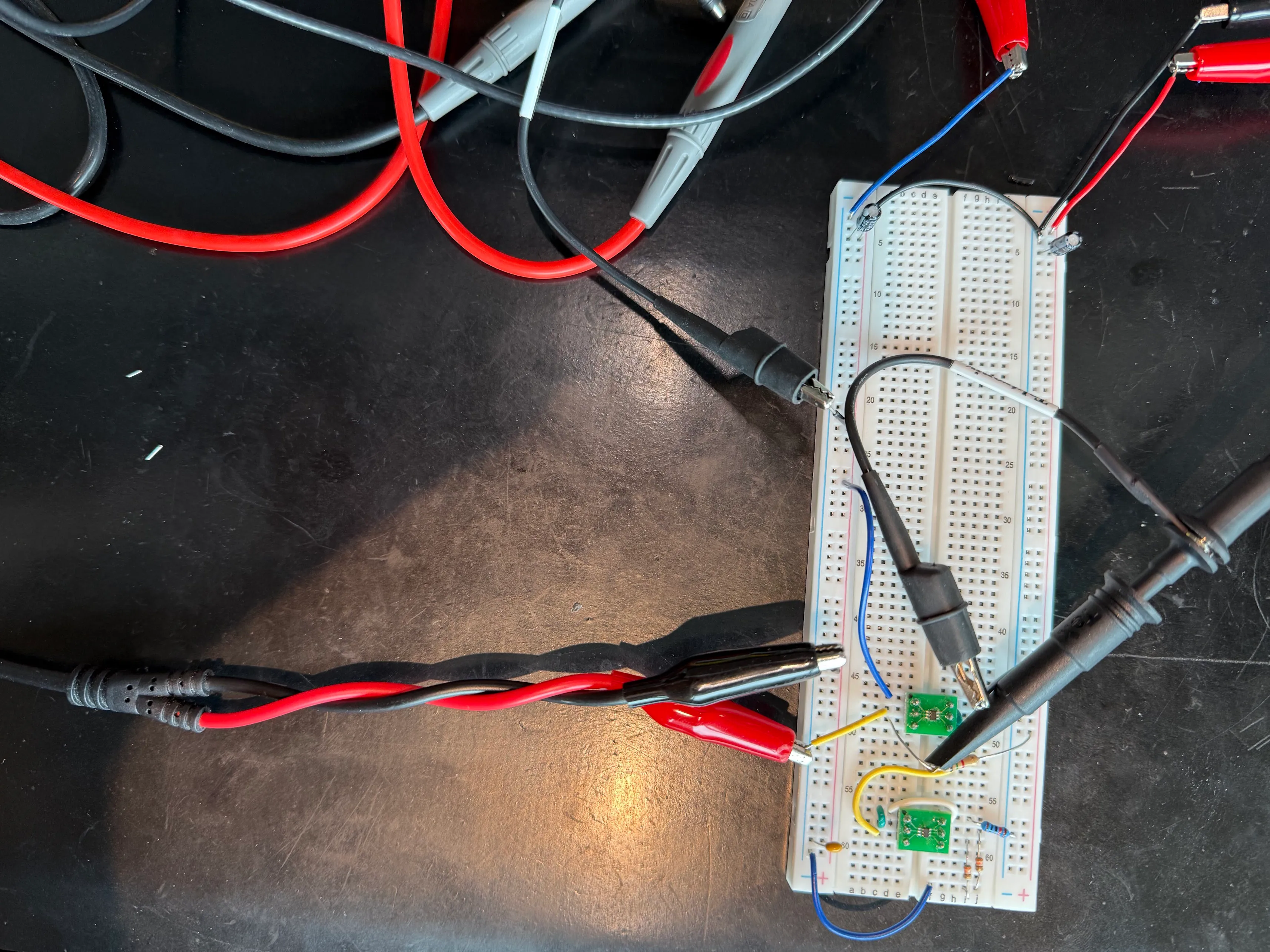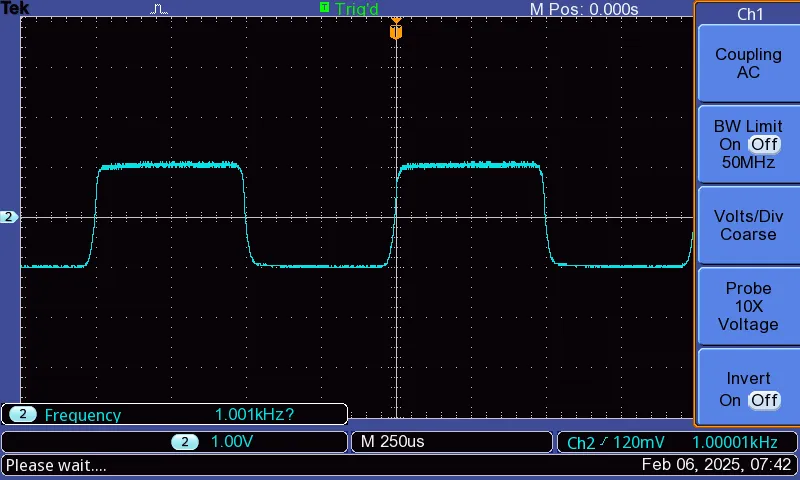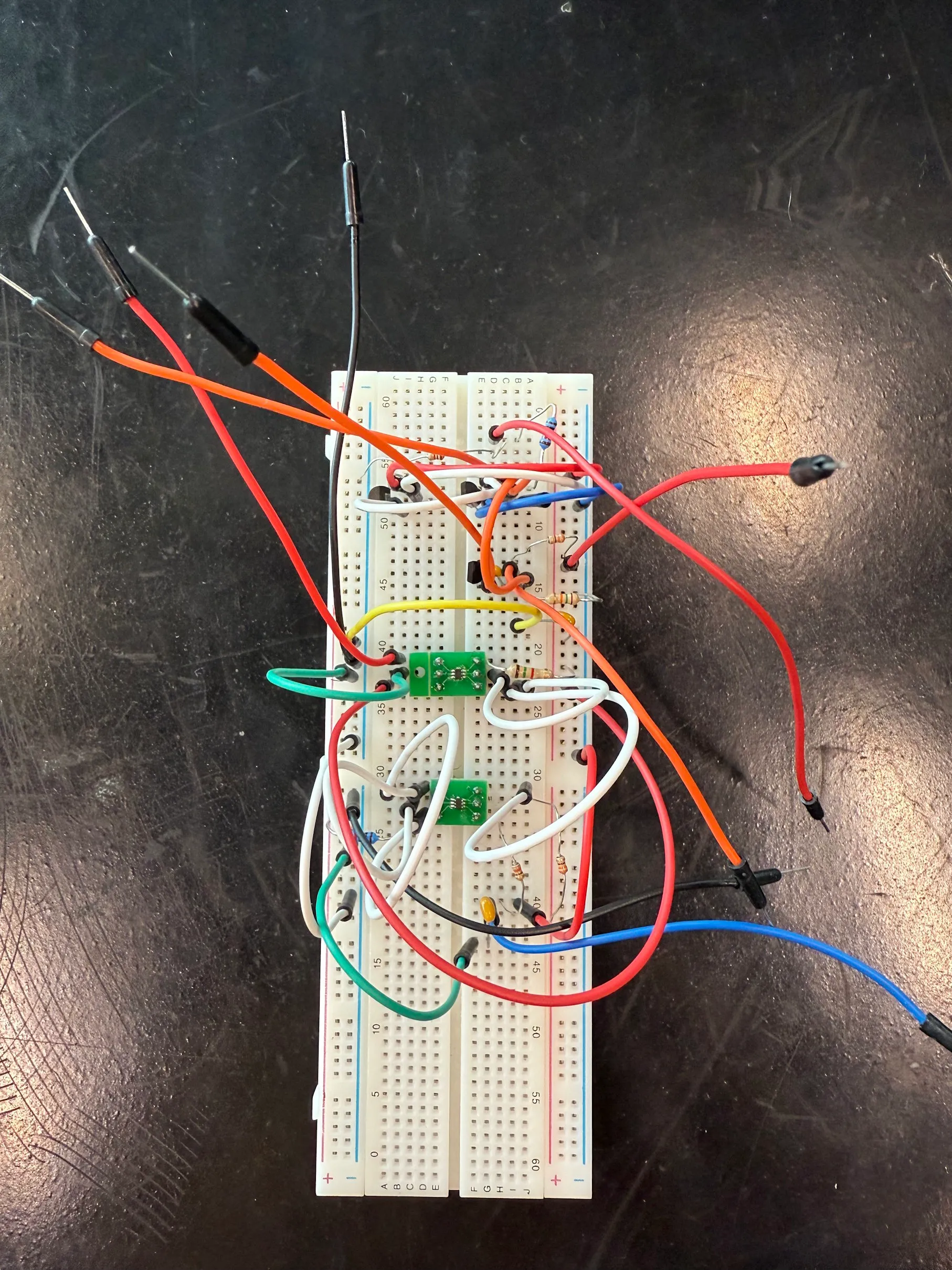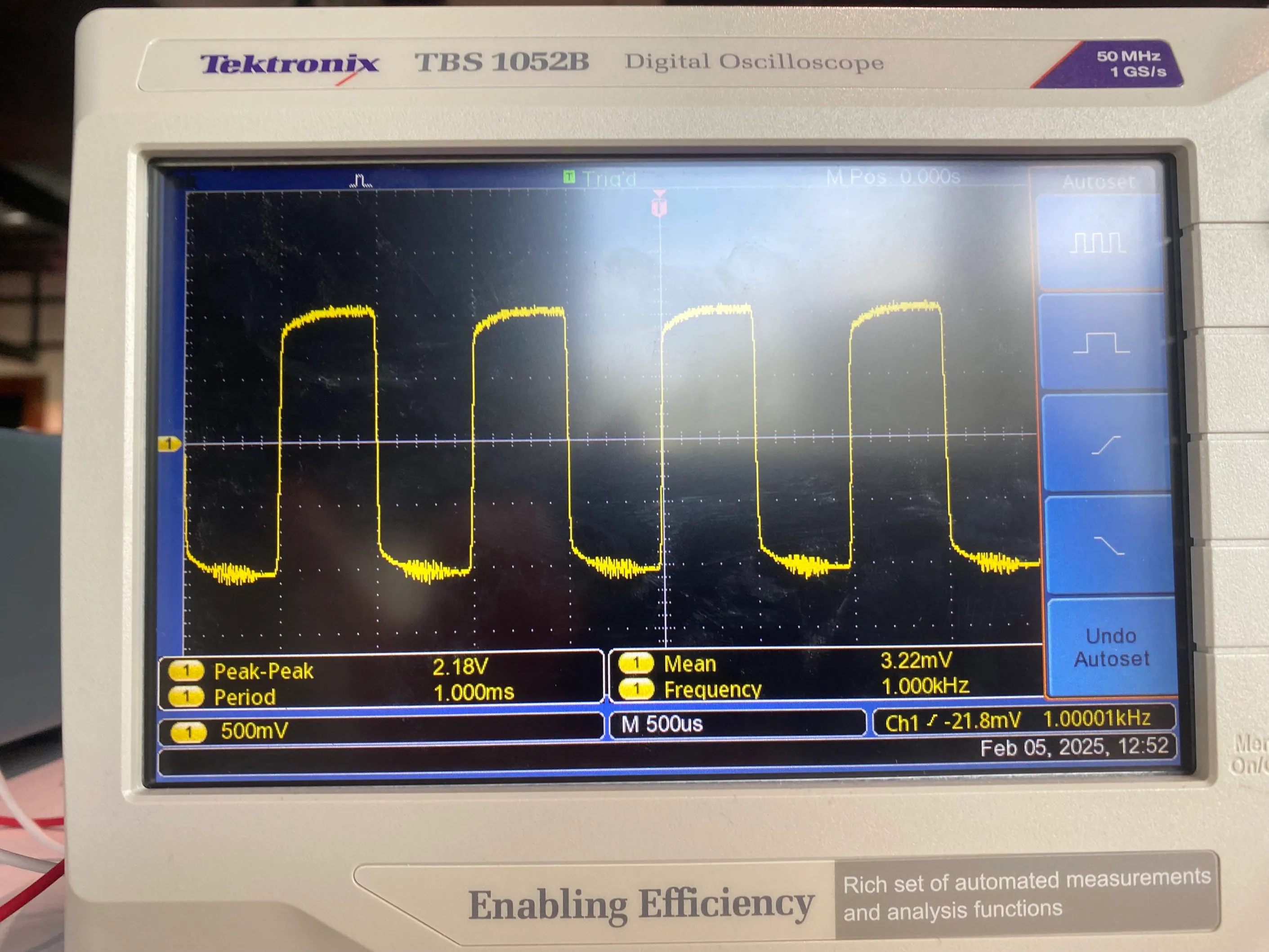EE3300/EE5300 Electronics Applications Why neatness matters
Last updated 7 February 2025
Case 1

A neatly constructed current mirror and differential pair.
Zoom:
AC-coupled oscilloscope measurement of the output from the neatly constructed differential pair. The input was a sine wave of sufficient magnitude to saturate the differential pair. Notice the swing is is approximately 2 V as can be calculated from the circuit.
Zoom:Case 2

An alternative construction of the differential pair (and the rest of the circuit).
Zoom:
Measurement of the differential pair output for the circuit shown in Figure 3. Notice the additional noise on the low voltage side and the worse rise-fall times.
Zoom:Summary
- Always connect directly to the power rails and place decoupling caps close to the sensitive circuits.
- Keep signal paths short. Cut the wires to the length that you need.
- Cut resistor legs so they can be pressed neatly down into the board.
- Sometimes it’s better to twist unshielded wires together like the red and black from the function generator in Figure 1 (or maybe it’s just superstition).